- Home
- TV History
- Network Studios History
- Cameras
- Archives
- Viewseum
- About / Comments
Skip to content
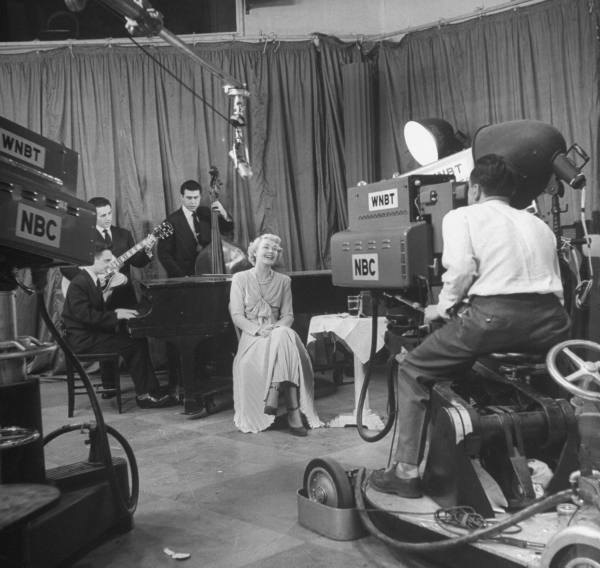
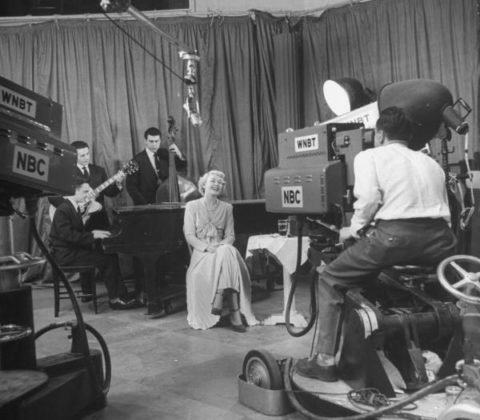
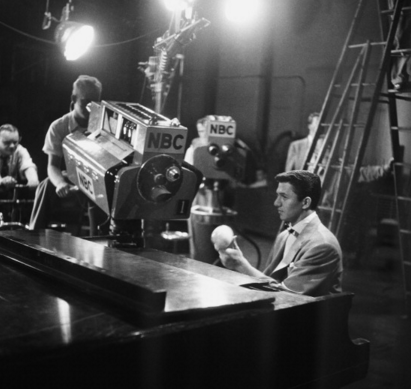

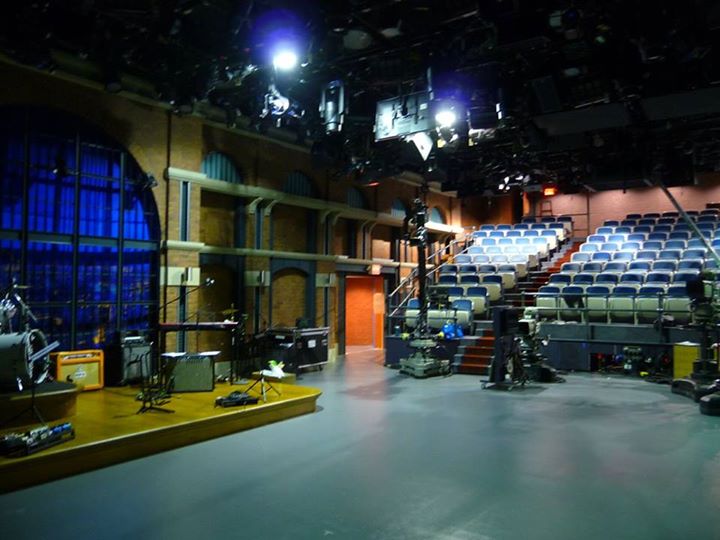

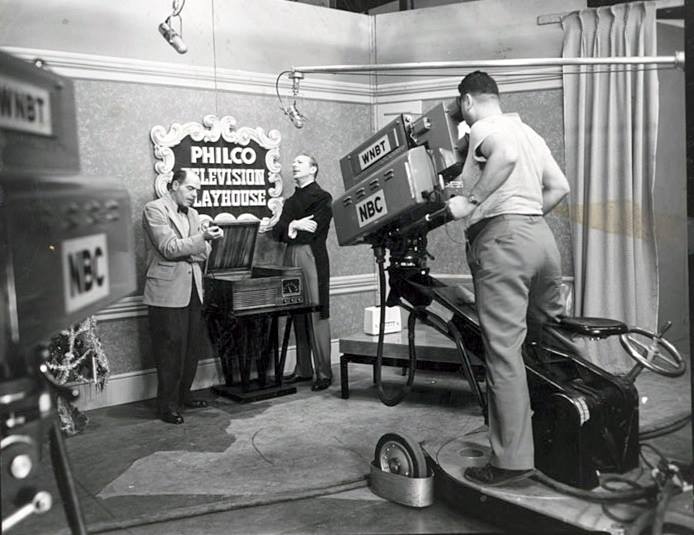

Search Results for: hourglass


Inside NBC Like You Have Never Seen! Pristine “Behind Your Radio Dial” Video
On May 12, 2021
- Viewseum
About five years ago, I found this classic 1948 movie short on YouTube. It was a bad dub of a bad dub, but at least it was a rare glimpse into the history of NBC when radio was king and TV was just getting started.
As a matter of fact, this film gives us the only video record of NBC Studio 8G in action with it’s unique NBC built Image Orthicon cameras in use(https://eyesofageneration.com/the-nbc-nd-8g-cameras/)
The show they are broadcasting is television’s first non-scripted entertainment show, “Hourglass”. When you see the unusual looking cameras and the acrobatic, dancing Costello Sisters in their mini costumes, you’ll be one of the few people to not only have seen this show, but also to know what the show is and who the dancers are. https://eyesofageneration.com/?s=hourglass
I was fascinated by all the studio and building décor we were seeing…places and features that were no longer there…overcome by the march of time and the need for space to evolve at 30 Rockefeller Plaza. Before I posted the video back then, I sent a link to Joel Spector and Dennis Degan; two NBC friends that have spent decades waking these halls and noting the changes. We compared notes and I compiled a written narrative that timed with the who, what and where we were seeing on the screen.
A year later, Matias Bombal contacted me and told me he had just located at pristine copy of the 1948 movie short “Behind Your Radio Dial” there in California. His efforts led to the digitizing of that print, but he thought it would be a shame to clutter it up with “lower third” graphics and explanations on screen, so…he narrated and enlarged upon what we are seeing using his own research and updated notes from myself, Joel and Dennis.
In the top video presentation, Matias does a masterful job of narrating and showing us what we will see in the second, or bottom video presentation, which is the completely digitized, HD version of the 35 millimeter print he found in California. Our great thanks to Matias Bambal and all the people that helped find and digitize this and to NBC veterans Joel Spector and Dennis Degan. ENJOY! -Bobby Ellerbee
The Introduction:
Below “Behind Your Radio Dial” The Movie Short:
Camera Rarities 3 Of 3…The NBC Studio 8G Cameras
On April 20, 2016
- TV History
Camera Rarities 3, Of 3…The NBC Studio 8G Cameras
NBC’s official grand opening date for 8G, their second ever television studio at 30 Rockefeller Plaza is listed as April 22, 1948. Actually, television had been coming from 8G long before that, while it was still designated a radio studio.
The first show ever to come from 8G was also television’s first variety show…”Hourglass”, which debuted May 9, 1946. at the link is a good story from 1948 on “Hourglass”. https://books.google.com/books?id=WkYEAAAAMBAJ&pg=PA83&source=gbs_toc_r&cad=2#v=onepage&q&f=false
At this link, you can see Studio 8G in action, during a broadcast of “Hourglass”.
Later that year, “Let’s Celebrate” was done here as a one time show on December 15, 1946 with Yankee’s announcer Mel Allen as host.
“The Swift Show” (a Swift Company sponsored game show), and “Americana” (a game show about American history) started here in 1947.
NBC knew television had to grow fast after WW II, but there were still war related shortages, like phosphorus for kinescope screens and military embargos on technology like the Image Orthicon which was used in guidance systems. Believing that new cameras would come more slowly than RCA’s October ’46 promise date, NBC engineers knew they had to have more than the Iconoscope cameras in 3H to work with.
On the sly, RCA gave them four Image Orthicon tubes, and four seven inch kinescopes for the VF and they started to work building a camera I call the NBC ND-8G. The ND was an NBC engineering code that stood for New Development.
These cameras were ready for use by the spring of 1946. “Hourglass” debuted from 8G on May 9, 1946 which was six months before the TK30 scheduled release in October. NBC got their first five TK30s in June, just in time for the Billy Conn – Joe Louis rematch at Yankee Stadium.
8G, as a radio studio, did not have built in audience seating like 6A, 6B and 8H, but it was thankfully three times the size of NBC’s only other television studio, 3H. “Radio Age” states that 8G could handle four consecutive shows, which meant the often fifteen minute, and half hour shows, with only one small set, could be staged one after the other from different walls of the studio. -Bobby Ellerbee
Seth Meyers Debuts The New Set…NBC Studio 8G REVISED
On September 3, 2014
- TV History
UPDATE 2021: Unfortunately the original video of the studio tour is gone, BUT…in it’s place is a fun bit Seth did with now retired NBC veteran Bob Friend, so take a look and laugh along with our friend Bob, the man who kept NBC Studio 8G alive and well for many, many years!
In Studio 8G, that desk platform was called “the shoe”. There are photos of the new set below and a shot of 8G from 1948 with it’s unique NBC built cameras.
Bob Friend and his electrical crew had a very busy couple of weeks rewiring and relighting this space, as did the set designers. Our other friends there, Mike Knarre and Bryan Durr got the time off but as camera and video men, probably had some catch up practicing to do to get used to the new layout.
NBC Studio 8G was 30 Rock’s second studio conversion from radio to television, with the first being NBC’s 3H which was created in 1935. Although the official 8G dedication was April 22, 1948, television had been done there since May of 1946. The “official dedication” date marks the date the studio was self sustaining with permanent lights, it’s own control room and cameras. As a side note, NBC Burbank was actually in operation two years before it was “officially dedicated”.
The first show ever to come from 8G was also television’s first variety show…’Hourglass’, which debuted May 9, 1946 when 8G was still officially a radio studio. Later that year, ‘Let’s Celebrate’ was done here as a one time show on December 15, 1946 with Yankee’s announcer Mel Allen as host. Contestants competed in stunts for prizes. ‘The Swift Show’ (a Swift Company sponsored game show), and ‘Americana’ (a game show about American history) started here in 1947.
I don’t think 8G, as a radio studio, had built in audience seating but it was thankfully three times the size of NBC’s only other television studio, 3H. “Radio Age” states that 8G could handle four consecutive shows, which meant the often fifteen minute and half hour shows, with only one small set, could be staged one after the other from different walls of the studio. Congratulations on the new digs guys!
When the studio floors were redone in 8G and 6B last year, I wish I had thought to ask for a few pieces of the concrete that got jackhammered and dumped. Some amazing history has happened on those floors! Enjoy and share! – Bobby Ellerbee
The NBC 8G Studio Cameras…One Of Television’s Rarities
On July 12, 2014
- TV History
The NBC 8G Studio Cameras…One Of Television’s Rarities
NBC’s official grand opening date for 8G, their second ever studio at 30 Rockefeller Plaza is listed as April 22, 1948. Actually, television had been coming from 8G long before that while it was still designated a radio studio.
The first show ever to come from 8G was also television’s first variety show…’Hourglass’, which debuted May 9, 1946. Later that year, ‘Let’s Celebrate’ was done here as a one time show on December 15, 1946 with Yankee’s announcer Mel Allen as host.
‘The Swift Show’ (a Swift Company sponsored game show), and ‘Americana’ (a game show about American history) started here in 1947.
With the RCA TK30 planned release date of late 1946, I have often wondered why the NBC engineers built these cameras to use in 8G but recent research put a new face on this and answers a few big questions.
NBC knew television had to grow fast after WW II, but there were still war related shortages, like phosphorus for kinescope screens and military embargos on technology like the Image Orthicon which was used in guidance systems. Believing that new cameras would come more slowly than RCA was planning on delivery, NBC engineers knew they had to have more than the cameras in 3H to work with. On the sly, the got four RCA Image Orthicons and four seven inch kinescopes for the VF and started to work building a camera I call the NBC ND-8G. The ND was an NBC engineering code that stood for New Development.
I think these cameras were actually ready for use by the spring of 1946. ‘Hourglass’ debuted from 8G on May 9, 1946 which was six months before the TK30 scheduled release in October. NBC got their first four TK30s in late June, just in time for the Billy Conn – Joe Louis rematch at Yankee Stadium.
I don’t think 8G, as a radio studio, had built in audience seating like 6A, 6B and 8H, but it was thankfully three times the size of NBC’s only other television studio, 3H. “Radio Age” states that 8G could handle four consecutive shows, which meant the often fifteen minute and half hour shows, with only one small set, could be staged one after the other from different walls of the studio.
Below we see the cameras in action on ‘The Philco Television Playhouse’ which originated in 8G beginning in October of 1948. Notice the camera peephole in the wall covered by a painting. Enjoy and share!